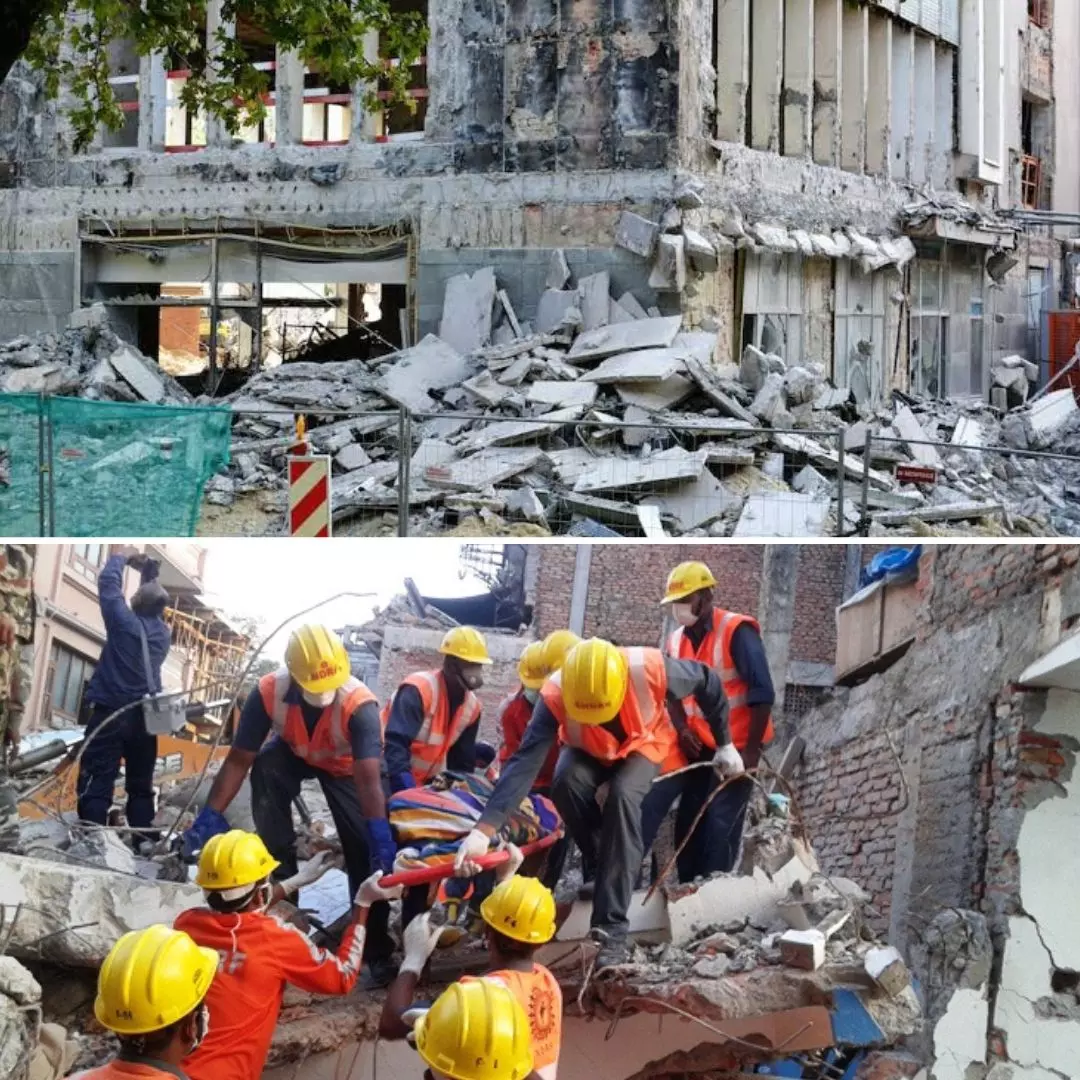The Turkey-Syria earthquake shook the world with devastating casualties and a widespread humanitarian crisis. It also raised concerns regarding the possible destruction such earthquakes could bring to nations. With tectonic stress accumulated over multiple regions, India was one such country that put its disaster preparedness under the radar.
Responding to the concerns raised, experts and scientists have assured people that India is well prepared to tackle even large-scale natural disasters. They also stated that there is little possibility of an earthquake of large magnitude shaking up India’s core as micro tremors in the country have helped it release tectonic stress over time. With no tectonic stress buildup, as seen in Turkey, the country might not witness a large-scale and devastating earthquake.
Turkey Case Study
The root cause of such massive destruction in Turkey was the triple junction. A triple junction is defined as the point where three tectonic plates meet and interact. They are considered important areas of geological activity and sites of significant seismic and volcanic activity. The movement of such plates can build up significant stress in the Earth’s crust that is eventually released in the form of earthquakes.
Talking about the situation in Turkey, the Director at the Ministry of Earth Sciences National Centre for Seismology, OP Mishra, said, “Triple junctions are rigid and compact and withstand a lot of stress. If it breaks, the entire stress is released, causing a lot of damage.” There are two such triple junctions in Turkey, and the breaking of this led to the massive earthquake in Turkey and Syria, claiming the lives of over 30,000.
Meanwhile, in India, the triple junction on the western side near Pakistan’s border is continuously releasing stress and strain due to the occurrence of micro-level earthquakes. Mishra stated that this region sees a few tremors of magnitude 4 and 5 as well. With such microquakes occurring every now and then in India, the stress gets released every now and then, than building up toward a large-magnitude earthquake.
In Turkey, there have been no such small earthquakes, which accumulated stress in the region. This was unleashed in the form of “several powerful earthquakes within 24 hours because the couple zone area was quite big, and it took time to break away,” said Mishra. Similar to the triple junction, a couple zone is the region where two tectonic plates slide past each other.
Seismic Location Of India
India is located in a seismically active region, but due to the occurrence of micro earthquakes now and then, the country remains protected from large-scale destructive quakes. Furthermore, the infrastructure also plays a key role in minimising the amount of damage that can be brought in.
Experts conveyed that the resonant frequency of a building could play a critical role in determining the severity of damage caused by an earthquake. Buildings have natural frequencies of vibration, known as resonant frequencies, which are determined by their mass, size, and other factors. The “shaky” feeling that comes as a harbinger of an earthquake is the ground motion that excites these natural frequencies causing the building to vibrate at its resonant frequency. The structure could then experience significant ground motion amplifications, leading to more intense shaking and potentially causing significant damage.
Speaking about the structures in Turkey, Mishra stated that “the frequency of the buildings in the affected region was less than the frequency of ground motion. Hence, the structures collapsed like a pack of cards.” He also assured that in India, there are several guiding building codes and construction practices based on particular seismic zones. About 59 per cent of India’s land mass is prone to earthquakes, and it is divided into four seismic zones based on the potential for earthquake activity.
Adding on to it, Mishra conveyed that the ministry is unifying the country’s seismic hazard zonation map through seismic microzonation studies. A report by The Hindu stated that the parameters required for the study had been shared with the Bureau of Indian standards (BIS). The Ministry of Urban Affairs and municipalities will then utilise them to create a new design code.
However, a challenge that continues to exist for the officials is that more than 90 per cent of the existing buildings are based on old technology, and most of them are non-engineered structures, especially in rural areas. So while new buildings are being sanctioned based on designs adhering to seismic codes, old structures continue to pose a concern, says Major General Manoj Bindal, former executive director at the National Institute of Disaster Management. Taking up the work to convert and quake-proof the old, non-engineered buildings to newer structures is a massive work.
Currently, there are 30 cities with a population of five lakh and above that fall under the seismic zones III, IV, and V intensities. The impact of large-scale quakes within these regions can be deflected if people and institutions strictly complied with the bylaws and codes to build resilient structures.
Preparing For The Worst
Another aspect that the experts stressed was India’s disaster preparedness and response. The country has a dedicated and trained force – the National Disaster Response Force (NDRF), which is well-equipped to deal with any form of fallout that follows large-scale disasters. Additionally, every state has its own disaster management authority and response force.
Even apart from this, there has been a paradigm shift noticed towards effective response and mitigation by strengthening the resilience of communities to rebound after a disaster. Under the National Disaster Management Authority’s (NDMA) guidance, several bodies, including the NDRF, public enterprises, private organisations, and NGOs, have been enabled to work on a community level for rescue missions and disaster preparedness.
In terms of strengthening buildings and reducing damage, the NDMA has issued guidelines for training masons and retrofitting existing buildings. The project would start with critical infrastructure belonging to the government and private institutions such as schools and colleges. The government may also consider relocating some structures that are extremely dangerous.
On being asked about the worst-case scenario of a Turkey-like earthquake striking the Himalayas, Major Gen Bindal said, “An earthquake of this magnitude will lead to massive landslides, damage to roads, villages, flash floods” among others. The impact of it highly depends on the epicentre of the earthquake, so the responsible authorities are already looking into understanding the same through simulation, models, and land use planning.
However, this was concluded with the assurance from experts that no buildup of tectonic stress, as seen in Turkey, is taking place in the country and that an effective response and mitigation system is in place to tackle such unforeseen situations.
https://thelogicalindian.com/h-upload/2023/02/14/500x300_229708-untitled-design.webp
Trending
2023-02-14 07:14:57.0
‘Prepared For The Worst’: Micro Quakes In India Would Prevent Turkey-Like Devastation, Says Experts











